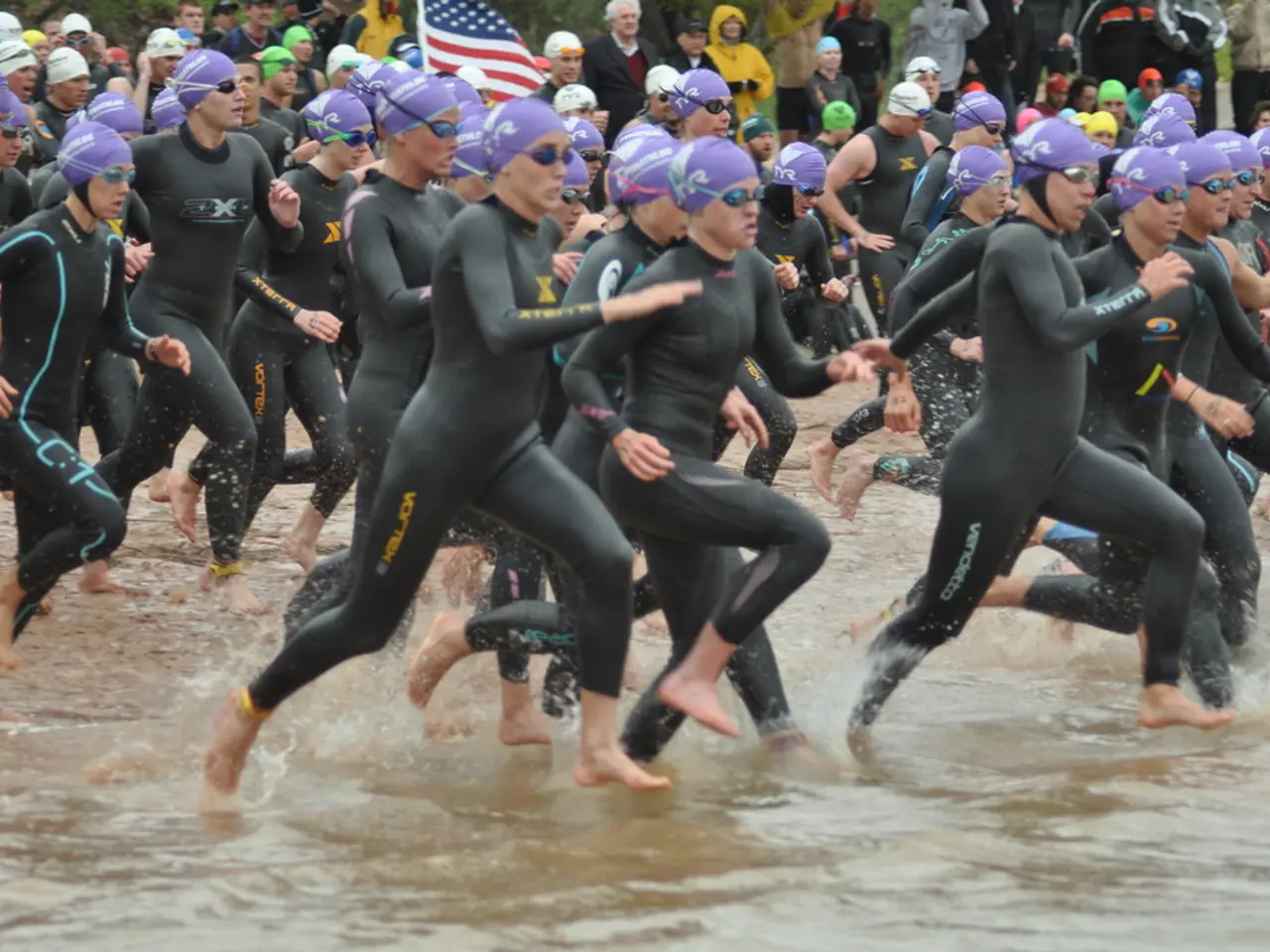Sport with Highest Calorie Burn Rate
Calorie Burn Comparison: Running, Cycling, and Swimming
When it comes to burning calories, the activities we choose can have a significant impact on our fitness goals. A study using the FITBOOK calorie calculator, based on the "Compendium of Physical Activities" dataset recommended by sports scientists, sheds light on the calorie burn differences between running, cycling, and swimming.
In a direct comparison, fast running at 12.5 km/h burns more calories than cycling at 26 km/h for both men and women of different ages. This results in a 100-calorie difference in 60 minutes. However, a strong swimmer can even out the calorie burn difference with higher intensity.
Running, which engages the legs, glutes, abs, and back, burns approximately 600 to 1000 calories per hour depending on speed and intensity. Swimming, on the other hand, burns about 700 to 800 calories per hour at vigorous intensity. Cycling, while burning fewer calories per minute than running, can still burn over 800 calories per hour at fast speeds (16-19 mph).
Weight is a critical factor in calorie burn. Heavier individuals burn more calories doing the same activity at the same intensity. Muscle engagement also plays a role—running engages more muscle groups, increasing calorie use, while swimming engages nearly the whole body. Cycling primarily targets lower body muscles but is easier to sustain for longer periods due to its low-impact nature.
For instance, a 35-year-old man, weighing 80 kg and standing 1.80 meters tall, can burn nearly 1000 calories in an hour. A 50-year-old man, weighing 85 kg and 1.80 meters tall, has a total expenditure of 2291 calories per day after 60 minutes of running at 10 km/h.
Interestingly, swimmers and leisurely runners at 8 km/h burn the same amount of calories. Consistency is key in losing weight, requiring a moderate calorie deficit. An untrained cyclist assumes a speed of 26 km/h.
In summary, for equal intensity and duration: - Running tends to burn the most calories per minute due to higher muscle engagement and heart rate. - Swimming burns slightly fewer calories but provides a full-body workout and joint protection. - Cycling burns fewer calories per minute but can be sustained longer, resulting in comparable or greater total calorie expenditure over long sessions.
Intensity and workout duration strongly influence total calories burned in each activity, with higher intensities and longer durations yielding greater calorie deficits. So, whether you're a runner, a cyclist, or a swimmer, remember that consistency and pushing yourself a little harder can help you reach your fitness goals.
[1] Compendium of Physical Activities. ACSM & ACSM's Health/Fitness Journal. 2008. [2] ACSM's Guidelines for Exercise Testing and Prescription. 9th ed. Lippincott Williams & Wilkins. 2018. [3] The FITBOOK Calorie Calculator. FITBOOK. Accessed 2021. [4] The Science of Swimming. The Science of Sport. 2019. [5] The Science of Cycling. The Science of Sport. 2018.
In correlation with the study that compared calorie burn rates of running, cycling, and swimming, it's evident that science shows that running, a high-impact activity, burns more calories per hour at higher speeds, typically ranging from 600 to 1000 calories. On the other hand, fitness-and-exercise activities like swimming and cycling, while burning fewer calories per minute compared to running, still providers significant calorie burn when performed at high intensities. Health-and-wellness enthusiasts engaging in swimming can burn about 700 to 800 calories per hour at a vigorous pace, while cycling can burn over 800 calories per hour when cycling at fast speeds (16-19 mph).




